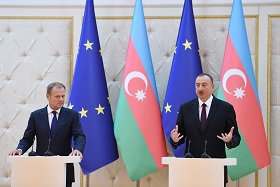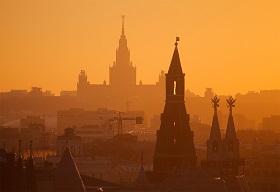The development of cooperation within the CIS is an objective necessity for all member states of the Commonwealth. Notwithstanding the intensification of integration processes in the post-Soviet space, discussions on whether the CIS has exhausted its potential are still underway. RIAC experts share their insights into the challenges facing the CIS and its prospects with the editorial board of the Russian International Affairs Council.
Russia's presidency of the CIS: What are our goals?
Irina Bolgova, PhD in History, Post-Soviet Studies Center at the MGIMO University, RIAC Expert
Russia’s presidency of the CIS in 2017 will prioritize a number of objectives that boil down to the need to enhance the efficiency of the Organization and “the practical benefit from its activities for all participating States.” These ideas have been reiterated so often that they have long ceased to be taken seriously. However, the cardinal changes that have taken place in the economic interaction and the security system along the external perimeter of the CIS have restored the Commonwealth states’ understanding that it is necessary to preserve the broad multilateral format of the Organization and introduce new effective impulses towards cooperation within its framework.
Russia objectively continues to play the leading role in the CIS space, even though the post-Soviet space is now open for external actors with competing ideas regarding international interaction. In all likelihood, Russia’s policy towards the CIS will reflect the common vector of consolidating a significant part of the post-Soviet space around Moscow. To this end, the CIS format is essential for maturing relations with the states that are not part of narrower integration structures like the EEU in the first place.
It is quite symbolic that Ukraine, regardless of the extreme deterioration of its relations with Russia, does not refuse to be a member of the CIS and its free trade area. This allows the CIS and the EEU member states to maintain the volumes of mutual trade at previous levels. The CIS format and trade preferences within the multilateral free trade zone serve, among other things, as the intermediate zone of multilateral economic interaction between the core of Eurasian integration (EEU) and its outer boundary, primarily the European Union. In addition, the multilateral FTA in the CIS space has an obvious potential for enhancing the internal interrelatedness of the post-Soviet region and for joining global markets and infrastructure. It is no coincidence that the list of priorities of the Russian CIS Presidency includes an increase in effectiveness of economic cooperation processes and a “coupling of different levels of integration processes in the CIS space.” Given the waning interest on the part of leading western actors, Russia becomes a natural point of attraction for promoting trade, economic relations, and production chains, as well as increased capacity of the production and consumer markets, and, more broadly, economic convergence within the CIS format.
CIS is 25 years old: What has been achieved?
Vladimir Evseev, PhD, Senior Researcher, Deputy Director of the Institute of CIS Countries
Since the CIS was originally designed as just an instrument for a civilized divorce of states in the post-Soviet space, the Commonwealth’s survival appears to be its crowning achievement. However, the centrifugal processes at some point gave way to the centripetal ones, that is, the countries expressed their desire to interact in the territory of the CIS. The simultaneous movement toward weakening and strengthening of ties was largely due to external influences, as well as the desire of national elites to be relatively independent from Moscow.
The fact that the CIS has managed to maintain a single economic space is another worthy accomplishment of the Commonwealth. Moreover, even the states that have left the CIS, such as Georgia, continue to remain members of many of its treaties. Considering that the reduction of trade barriers creates advantageous conditions for enhancing bilateral/multilateral cooperation, it is advantageous for states to operate in a single CIS market. It appears that Ukraine is stepping up economic cooperation within the CIS to offset the losses suffered due to the termination of its cooperation with Russia.
Initially, the CIS not only participated in economic activities, but also was actively involved in peacekeeping efforts such as putting an end to the civil war in Tajikistan or preventing another war in Abkhazia. While certain functions of the CIS in the military-political sphere have lost their topicality over time, the CIS will continue to function in both the short and medium timeframes. However, most of this activity will take place in the economic sphere.
The experience accumulated within the framework of the SCO could be used to further strengthen the CIS. The Shanghai Cooperation Organization has established its Regional Anti-Terrorist Structure (RATS SCO), intended for exchanging intelligence information on terrorists and coordinating the activity of the security structures of the organization. The CIS can create a structure of its own similar to RATS SCO. Developing military-political cooperation within the CIS framework is no less important. This could encourage Turkmenistan, an associated member of the Commonwealth, to intensify its cooperation within the CIS framework and join the common struggle against terrorism and radicalism.
CIS in 2017: What challenges should be met?
Sergey Markedonov, PhD in History, Associate Professor, Department of Regional Studies and Foreign Policy, Russian State University for the Humanities, RIAC Expert
In terms of conflict and security challenges in the post-Soviet space, the situation in the Donbass region appears to pose the main problem. Recently there have been attempts to change the status quo established after signing the Minsk II package in February 2015. This does not mean that in 2015-2017 the situation was stable, predictable or peaceful: there were instances of the Minsk agreements’ violations and armed confrontations taking place. However, there are now attempts to provoke a more violent confrontation. As the gap between Kiev and the “people's republics” widens and the confrontation becomes more aggravated, the situation has become even more dangerous. The Ukrainian side does not want to implement the Minsk agreements, and the West lays the responsibility on Russia for their implementation. This situation brings about a host of dead ends and uncertainties.
Another challenge representing increased danger is the Nagorno-Karabakh conflict. In 2016, the largest escalation since the coming into force of the cease-fire agreement for an indefinite term (signed in May 1994) took place. After putting an end to the “Four Day War” and restoring a fragile truce, the situation failed to improve in a meaningful way. Despite the ongoing negotiations, the situation deteriorates every so often, as was the case in February 2017. Although certain aspects of the conflict do deter the parties from repeating the events of April 2016, the threat still remains. One such aspect is the fact that the Russian-Turkish relationship has acquired a pragmatic nature (the genuine improvement of relations between the two countries is a distant prospect yet).
The conflicts in Abkhazia and South Ossetia are being transformed, with the main problem there now being internal development, rather than a confrontation with Georgia. After Moscow recognized Abkhazian and South Ossetian independence, it actually became their guarantor and patron. Neither Georgia, nor the West has in fact made a shot at changing the status quo that took shape in August 2008. Now and then statements are made that the issue of the Georgian territorial integrity is still on the agenda and that integrity cannot be questioned. However, from the conflict perspective, there are no attempts to force changes, and changes appear to be unlikely in the foreseeable future.
As for the conflict in Transnistria, there are some positive dynamics due to Igor Dodon’s victory in the presidential election. While frequent meetings of a post-Soviet state leader with the Russian counterpart are a rare occurrence, Dodon has already met twice with Vladimir Putin this year.
CIS and integration: In search of opportunities
Alexander Gushchin, PhD in History, Associate Professor, Department of Post-Soviet Countries, Russian State University for the Humanities, RIAC Expert.
If compared with the 1990s, the CIS format may appear to have reached its limits in terms of integration. Currently, the development of different levels of integration is underway. The CIS countries are at different levels of integration development, and more highly specialized projects are the thing of the future. However, even highly specialized projects are in a state of crisis. The most advanced project in the post-Soviet space, the EEU, remains a priority, but its development will depend on Russia’s bilateral relations with other states.
From the perspective of integration, the export of Russian education and scientific discourse is certainly of great importance. Due to Russia’s lack of programs such as the European Erasmus, there is still much need for improvement. We should create a platform for academic exchange, an electronic platform for entering Russian universities, actively develop programs of dual degrees, dual master’s, doctoral, postgraduate and even bachelor’s degree programs. In addition, it is necessary to develop a network of Russian universities’ branches in other countries. Students could choose an incomplete bachelor degree system, within which they would study several semesters in their home country and then continue education in a Russian university.
In this sphere, Russia so far compares poorly with China in Central Asia, although the European standards still take precedence in the western CIS countries. This is not to say that the quota system does not work at all, but the system of CIS citizens’ admission to Russian universities has to undergo modernization. We should develop horizontal links between universities of Russia and post-Soviet countries. As a result, net universities could be established, which would make a real platform. Without this, promoting integration by economic and political measures only may prove to be insufficient.
Prepared for publication by Nikolai Mukhin and Irina Sorokina








